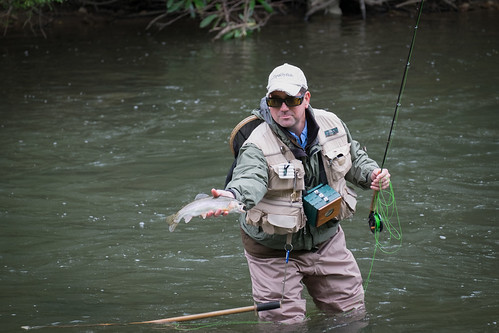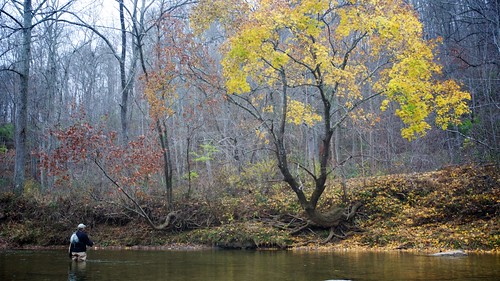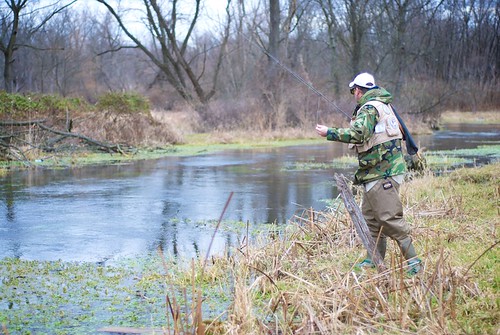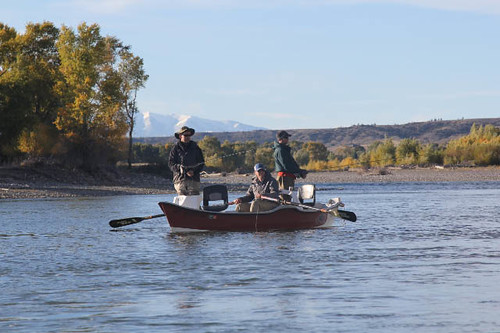You are using an out of date browser. It may not display this or other websites correctly.
You should upgrade or use an alternative browser.
You should upgrade or use an alternative browser.
Getting Started
Blue Liner Flows Review | USGS Stream Gauges
Jun 18
- 269
- 2
All water level data originates from the United States Geological Survey (USGS) Surface-Water Data, which monitors over 13,000 stream gauges across the U.S. and more than 350 in Pennsylvania. The USGS has been transitioning to a new online interface over the past five-plus years. The updated look and feel have left some old features behind while adding new ones. I hate it.
So, I’ve been on the hunt for a desktop and mobile app that delivers USGS backend data through a clean, easy-to-use interface. Blue Liner Flows offers a solid solution for iPhone, iPad and Mac users, with apps built for both platforms. Most importantly, favorites and preferences sync across devices. There’s a free version, but I’ll be reviewing the $6.99 annual paid version.
Key features include: favorites, state selection, map view, latest data overview, discharge in CFS, discharge in feet, average annual discharge, various time views, weather forecasts, alerts, temperatures (station-dependent), turbidity (station-dependent), and other data specific to each gauge.
I found the app very easy to set up on my Mac. Once configured, all my favorites and alerts synced automatically to my iPhone. You don’t need both devices—an iPhone alone works just fine. I especially liked navigating between the state, favorites, and map views. It’s fast and intuitive. Most views display the key information I’m looking for, including directional arrows indicating whether water levels are rising or falling.
[ATTACH type="full" width="720px"...
Your approach to a day of fly fishing?
Nov 26
- 979
- 0
There are quite a few beginners on the board so I thought I would post a little on how I approach a day on the stream. I would be very interested to read about how others on the board approach a day of Fly Fishing.
The success or failure of a day on the stream (although no day on the stream is really a failure…unless you drown I guess) is often determined before you even leave home. I check flows and temps on the USGS; conditions can differ in certain areas and streams. For example, if the water is high or low, perhaps a more stable stream like a limestoner would be a better choice. I also check the weather and find out the temperature high and low, cloud cover or sun, and rainfall info. I include all this info to make my decision on where to fish.
In addition, If I’m planning to fish an ATW, I will check of the PFBC site for stocking info. Actually, I’m not really a white truck chaser, quite the opposite. I try to avoid freshly stocked fish because I hate the crowds they attract, and I really don’t like fishing for freshly stocked fish, but that’s just me. Some may even use the Internet to find some hotspots (believe it or not!). IMO, posting a good report about a certain stream does attract anglers, especially in the short term. Again, I often do the opposite, if the word is out on hot fishing on a certain stream, I’ll often try to guess where the least amount of pressure is, and choose accordingly. Hatch info on the Internet is useful though. Even if the reports are from a different stream, I can “interpolate” and guess what’s hatching on some streams I know.
Once I pick where I want to fish, if it’s not an all-day trip, my next decision is when to fish; morning, afternoon or evening? As a general rule, in the winter the warmest time of day (afternoon) is usually the best, and in the summer...
The success or failure of a day on the stream (although no day on the stream is really a failure…unless you drown I guess) is often determined before you even leave home. I check flows and temps on the USGS; conditions can differ in certain areas and streams. For example, if the water is high or low, perhaps a more stable stream like a limestoner would be a better choice. I also check the weather and find out the temperature high and low, cloud cover or sun, and rainfall info. I include all this info to make my decision on where to fish.
In addition, If I’m planning to fish an ATW, I will check of the PFBC site for stocking info. Actually, I’m not really a white truck chaser, quite the opposite. I try to avoid freshly stocked fish because I hate the crowds they attract, and I really don’t like fishing for freshly stocked fish, but that’s just me. Some may even use the Internet to find some hotspots (believe it or not!). IMO, posting a good report about a certain stream does attract anglers, especially in the short term. Again, I often do the opposite, if the word is out on hot fishing on a certain stream, I’ll often try to guess where the least amount of pressure is, and choose accordingly. Hatch info on the Internet is useful though. Even if the reports are from a different stream, I can “interpolate” and guess what’s hatching on some streams I know.
Once I pick where I want to fish, if it’s not an all-day trip, my next decision is when to fish; morning, afternoon or evening? As a general rule, in the winter the warmest time of day (afternoon) is usually the best, and in the summer...
Fall Fly Fishing Opportunities in Pennsylvania
Sep 21
- 1,211
- 0
Fall fly fishing in Pennsylvania offers anglers an awesome opportunity to enjoy cool, colorful days on some spectacular streams. Anglers will appreciate the solitude of fall fishing while others are busy with different fall activities. There are plenty of streams across the state with trout and hatches to keep you busy on familiar waters and even going after some streams you’ve been thinking about.
Just like in the spring, you’re looking for trout and good water. There are plenty of streams that have naturally reproducing trout as well as stocked waters by the Pennsylvania Fish and Boat Commission (PFBC). However, the PFBC only provides very limited stocking on select streams during the fall, which starts at the end of September through the beginning of October.
Hatches
As the weather begins to change, so does the entomology or insect life in the stream. Activity will differ from region to region, stream size, summer water temperatures, and geology. The fall provides a more limited selection of insects, and often, anglers enjoy bringing a more modest selection of flies and imitations. Some of the more popular collections include Slate Drakes, BWOs, Caddis, terrestrials and egg patterns. Typical nymphs and streamers are always part of the mix.
Where to Fly Fish?
Stocked streams and Special Regulation Projects
About 40 streams are stocked after the start of fall by the PFBC. The amount of trout is not close to the spring stockings, but offer increased angling opportunity to some of the more popular Special Regulation streams across the state like Tuplehocken Creek, Ridley Creek, Oil Creek, Neshannock Creek, Little Lehigh, Little Pine Creek, Bush Kill, Kettle Creek and Laurel Hill Creek, to name a few. The full list of fall stocked lakes and streams can...
Just like in the spring, you’re looking for trout and good water. There are plenty of streams that have naturally reproducing trout as well as stocked waters by the Pennsylvania Fish and Boat Commission (PFBC). However, the PFBC only provides very limited stocking on select streams during the fall, which starts at the end of September through the beginning of October.
Hatches
As the weather begins to change, so does the entomology or insect life in the stream. Activity will differ from region to region, stream size, summer water temperatures, and geology. The fall provides a more limited selection of insects, and often, anglers enjoy bringing a more modest selection of flies and imitations. Some of the more popular collections include Slate Drakes, BWOs, Caddis, terrestrials and egg patterns. Typical nymphs and streamers are always part of the mix.
Where to Fly Fish?
Stocked streams and Special Regulation Projects
About 40 streams are stocked after the start of fall by the PFBC. The amount of trout is not close to the spring stockings, but offer increased angling opportunity to some of the more popular Special Regulation streams across the state like Tuplehocken Creek, Ridley Creek, Oil Creek, Neshannock Creek, Little Lehigh, Little Pine Creek, Bush Kill, Kettle Creek and Laurel Hill Creek, to name a few. The full list of fall stocked lakes and streams can...
Fly Fishing Getting Started - Knots for Tippet and Leaders
Feb 04
- 1,337
- 0
Personally one of the most difficult situations I still encounter on the stream to solve is tying together tippet and leader. Usually I need to do this in the least desirable time, like in the evening during the middle of a big hatch. Usually the scene includes a lot of trout leaping out of the water and laughing at me while a struggle with a knot I can barely see. Ughhh
To help with tying flies to your tippet Rio shares with us how to tie seven popular fly fishing knots including the clinch knot, improved clinch knot, loop knot, Homer Rhoads knot and others . They provide some easy to follow directions, laughing trout not included. I also like how the Zack and Simon explain when to use the knots and some of the advantages of each knot. I had chance to catch up with I enjoyed catching up with Simon again on the exhibit floor at Somerset Fly Fishing show.
A good video if your are looking to add or improve your fly fishing knots.
To help with tying flies to your tippet Rio shares with us how to tie seven popular fly fishing knots including the clinch knot, improved clinch knot, loop knot, Homer Rhoads knot and others . They provide some easy to follow directions, laughing trout not included. I also like how the Zack and Simon explain when to use the knots and some of the advantages of each knot. I had chance to catch up with I enjoyed catching up with Simon again on the exhibit floor at Somerset Fly Fishing show.
A good video if your are looking to add or improve your fly fishing knots.
Fly Fishing Getting Started - Spring Creek Winter Flies
Jan 19
- 1,985
- 0
Winter fly fishing can be a good opportunity to get out and take a break from your fly tying bench. The opportunities are certainly a little more limited during the winter months with many streams possibly iced up. Southcentral Pennsylvania can often offer several options in in the region during the winter with spring influenced streams and wild trout.
Trout during the winter are not as active as you might normally find them in the spring and summer. Spring fed streams offer a much more consistent temperature often in the 50's year round and thus more resistant to the cold weather conditions. Some of these popular winter streams in Southcentral Pennsylvania include Yellow Breeches Creek, Big Spring Creek and LeTort. The wild trout in these streams can be incredibly challenging when the weather is warm, so have some realistic expectations for your first trip to the region.
Dave Weaver offered some solid ideas in the forums. "My usual advice to CV [Cumberland Valley] newbies is to embrace the reality that trout in these creeks are bottom feeders and live on a year round diet of scuds, sculpins, midge pupa, and cress bugs. This isn't to imply that you won't find rising fish, you can, and there are hatches as well (mainly sulphers and BWOs) but for someone used to fishing upstate or in the Catskills....it's often a big disappointment. You can fish for days (esp this time of year) and not see any surface activity around here."
I asked Southcentral Pennsylvania fly fishing guide, Mike Heck, what are his favorite flies are for wild trout on his local spring fed streams. Mike...
Trout during the winter are not as active as you might normally find them in the spring and summer. Spring fed streams offer a much more consistent temperature often in the 50's year round and thus more resistant to the cold weather conditions. Some of these popular winter streams in Southcentral Pennsylvania include Yellow Breeches Creek, Big Spring Creek and LeTort. The wild trout in these streams can be incredibly challenging when the weather is warm, so have some realistic expectations for your first trip to the region.
Dave Weaver offered some solid ideas in the forums. "My usual advice to CV [Cumberland Valley] newbies is to embrace the reality that trout in these creeks are bottom feeders and live on a year round diet of scuds, sculpins, midge pupa, and cress bugs. This isn't to imply that you won't find rising fish, you can, and there are hatches as well (mainly sulphers and BWOs) but for someone used to fishing upstate or in the Catskills....it's often a big disappointment. You can fish for days (esp this time of year) and not see any surface activity around here."
Dave Weaver on LeTort Spring Run
I asked Southcentral Pennsylvania fly fishing guide, Mike Heck, what are his favorite flies are for wild trout on his local spring fed streams. Mike...
Fly Fishing Getting Started - What Fly Rod and Fly Reel to get?
Mar 20
- 2,573
- 0
For the love of Zeus, you don't want to look like the dopey guy in the Symbicort commercial that has a crappy M*A*S*H hat, is fishing for brook trout in a creek with a large arbor saltwater 9 wt reel and 15-foot fly rod setup with a real bobber on your line. I'm not saying go spend all your 401k money, quite the opposite. Don't spend a lot, but get something that makes sense to get started within our region to fly fish for trout.
Fly Rod
If you are just getting started, you will likely want a 5 weight (wt) 8'6" - 9' graphite, medium-fast action fly rod. This is an all-around great fly rod for beginners. I like the four-piece rods as they travel better. Make sure whatever setup you get has a good rod tube to keep it protected when it is stored away or while in your vehicle. You can expect to pay about $100 or more to get started.
Fly Reel
To select a fly reel you match the weight of the fly rod to the corresponding reel. If you get a 5 wt rod then you get a 5 wt reel. Nothing fancy needed when you first get going, it's really just a spool to reel in your fly line. A line holder if you will. No need to drop a car payment just yet. Starting at around $100 will get you a good quality machined aluminum reel. While as little as $35-$70 will get you into the game with a stamped steel or synthetic line holder.
Fly Line
Be sure to complete your setup with a weight-forward fly line that matches the weight of your fly rod and fly reel. Remember, unlike a spinning rod...
Fly Fishing Getting Started - Take the Journey
Jan 16
- 1,579
- 0
I am hoping to expand on that information this spring with a new and updated series of content on the site that is targeted for beginners getting started with fly fishing. From my own experience, it took me many years to really grasp a strong understanding of the sport, let alone having any confidence that I knew what I was doing on a stream. I still question myself after 40 years, so not much has changed. After my last few years, revisiting the fundamentals of the sport would be a good lesson for me as well. I have found myself in a rut with some old habits and anxious to hone my skills again.
Specifically, I will be adding a weekly blog post to the site that will be aimed at beginners for several months. I will cover many of the fundamentals of the sport including topics on trout, streams, hatches, flies, gear, and more. As we move into April and May we will cover specific techniques and strategies based on the time of year. These blog posts will be great for anyone just trying to get their head around the sport. There are plenty of great books and Internet resources for anglers to explore as well. The posts are intended to be an introduction to a topic. I will be making sure to include that information as well so folks dig a little deeper on their own. Part of the fun of the sport is the exploration.
[ATTACH type="full" align="right" width="500px"...
Where to Fly Fish in Montana? Part Two - How to Plan a Guided Trip
Nov 18
- 912
- 0
By Brian McGeehan at Montana Angler Fly Fishing
As the 2013 season winds down many of us put our fishing ambitions on pause until the thaw arrives in spring. For those folks that enjoy blending their travels with their favorite pasting, fall is also a great time to start planning a destination fishing trip for 2014. When Dave Kile asked me to put together a post for planning a Western fly fishing trip I realized it was a pretty broad task so I decided to limit the advice to my home state of Montana (although a lot of these tips can apply to other states as well). Since planning a trip where you are fishing unguided is very different than going with an outfitter part 1 focused on DIY anglers. I make my living helping anglers plan their Montana fishing trips so hopefully, this post won’t come across as too much of a sales pitch, but rather a useful guide for planning a guided fishing adventure to the big sky state. Montana is a huge state and there is also a much larger diversity of types of rivers and streams than encountered in the East so teaming up with an experienced outfitter can definitely streamline your trip. Quality Montana fly fishing lodges and outfitters can offer several advantages to out of state anglers: local river knowledge and timing, float fishing access for the larger rivers, private access on ranches and assistance with lodging.
Most of the folks that email and call us about a trip to Montana don’t know where to begin. The first thing we try to do when someone approaches us bout a possible trip to Montana is to...
As the 2013 season winds down many of us put our fishing ambitions on pause until the thaw arrives in spring. For those folks that enjoy blending their travels with their favorite pasting, fall is also a great time to start planning a destination fishing trip for 2014. When Dave Kile asked me to put together a post for planning a Western fly fishing trip I realized it was a pretty broad task so I decided to limit the advice to my home state of Montana (although a lot of these tips can apply to other states as well). Since planning a trip where you are fishing unguided is very different than going with an outfitter part 1 focused on DIY anglers. I make my living helping anglers plan their Montana fishing trips so hopefully, this post won’t come across as too much of a sales pitch, but rather a useful guide for planning a guided fishing adventure to the big sky state. Montana is a huge state and there is also a much larger diversity of types of rivers and streams than encountered in the East so teaming up with an experienced outfitter can definitely streamline your trip. Quality Montana fly fishing lodges and outfitters can offer several advantages to out of state anglers: local river knowledge and timing, float fishing access for the larger rivers, private access on ranches and assistance with lodging.
Montana Fly Fishing
Most of the folks that email and call us about a trip to Montana don’t know where to begin. The first thing we try to do when someone approaches us bout a possible trip to Montana is to...
Spring brings an order of Trichoptera (Caddisflies)
Apr 08
- 2,349
- 15
Great article. I am thankful for this site and its contributors. In the months I have been a member I have received much. Thanks to you and all of the generous people who provide insight, information and reasoned opinions.
Salmo
Salmo
Fly Fishing Getting Started - Knots and the DBK
Aug 27
- 2,587
- 38
Yea, the blood for the uninitiated can be a pain but it is vaulable.
(took me alittle while to get proficent at it)
A thing that helped was a block of wood with two nails that are removable- this will really help in tying a good knot and makes it easier to do so.
The blood knot is very helpful for creating droppers too.
I can tie nail knots but not very well and I need the tool (I use the one that looks like a pen) but it is something I only do a couple times a year though. Luckily, I can do tie it in the comfortable enviroment of home.
Felt like child when David tied one for me one day- I probably could have done it but I know he could tie it faster and time was a wastin'.
Triple surgeons too when I am in a hurry.
Been using the improved clinch for line to fly.
(took me alittle while to get proficent at it)
A thing that helped was a block of wood with two nails that are removable- this will really help in tying a good knot and makes it easier to do so.
The blood knot is very helpful for creating droppers too.
I can tie nail knots but not very well and I need the tool (I use the one that looks like a pen) but it is something I only do a couple times a year though. Luckily, I can do tie it in the comfortable enviroment of home.
Felt like child when David tied one for me one day- I probably could have done it but I know he could tie it faster and time was a wastin'.
Triple surgeons too when I am in a hurry.
Been using the improved clinch for line to fly.
Meet the Hendricksons!
May 04
- 2,781
- 2
Some nicely shot footage of nymphs doing stuff that nymphs do.
Fly Fishing Instructional Mini-Jam
Feb 28
- 975
- 3
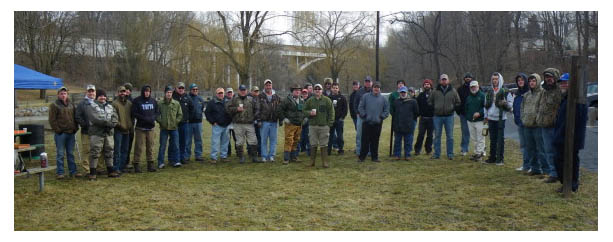
The 2011 Instructional Mini-Jam is in the books, and was a huge success.
A BIG "Thank You" to the instructors - you guys did a great job, as I knew you would. Sorry I had to cut each of you short - this showed everyone just how well versed you guys were. Most impressive!
Here's a list of our instructors:
jdaddy - Gear and TU membership.
JayL - What trout eat, and flies to immitate them.
pcray - techniques used to fish those flies.
skiltonian - Indicator fishing techniques.
fly_flinger - common knots.
JasonS - On Stream Instruction.
Old Lefty - Fly Casting.
I'd also like to point out the generosity of our senior members in attendance. Andy (surveyor06) sorted and distributed flies that were donated for our new/non-tying members. They received several dozen each!
Lastly, I'd like to thank all of our senior and newer members, friends, and family members that showed up, and braved the bone chilling wind in the morning. I counted 36 people in attendance at the time of the group photo, and several more showed up during the day. Some had driven close to 3 hours to attend - that's hard core!
Judging from how well this event was received, I'd like to see this become an annual event. Hopefully, it was a learning experience for all. Please post anything you think that would help make this event better for next year - there's always room for improvement. Link to the thread in the Forum.
It was really nice to see old friends, and make new ones as well. - Heritage Angler
A special note of thanks goes out to Heritage Angler for his effort int bringing this event together. Heritage Angler really demonstrates what the sport is all about. -dkile
USGS WaterAlert System - "Can you hear me now"
Jul 07
- 1,353
- 12
The USGS has been sharing a very cool and useful online database for many years that provides real-time stream flow conditions for many years. This web-based system provides timely details for many streams across the country with almost hourly updates being sent from radio and satellite transmissions to the USGS Water Watch web site.
 A truly invaluable tool for me and has helped determined many a trip especially during heavy spring rains.
A truly invaluable tool for me and has helped determined many a trip especially during heavy spring rains.
The U.S. Geological Survey WaterAlert service now can send e-mail or text messages from the system. The WaterAlert system is supported through the USGS Cooperative Water Program, the USGS National Streamflow Information Program, and by USGS data-collection partners.
Real-time data from USGS gages are transmitted via satellite or other ways to USGS offices at various intervals; in most cases, once every 1 or 4 hours. Emergency transmissions, such as during floods, may be more frequent. Notifications will be based on the data received at these site-dependent intervals.
Thanks Bruno for the scoop.

The U.S. Geological Survey WaterAlert service now can send e-mail or text messages from the system. The WaterAlert system is supported through the USGS Cooperative Water Program, the USGS National Streamflow Information Program, and by USGS data-collection partners.
Real-time data from USGS gages are transmitted via satellite or other ways to USGS offices at various intervals; in most cases, once every 1 or 4 hours. Emergency transmissions, such as during floods, may be more frequent. Notifications will be based on the data received at these site-dependent intervals.
Thanks Bruno for the scoop.

